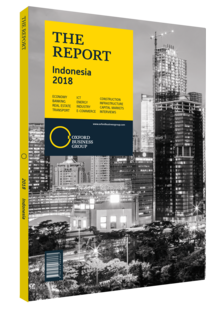Kartika Wirjoatmodjo, President Director, Bank Mandiri: Interview

Interview: Kartika Wirjoatmodjo
How do you assess the level of liquidity in the domestic banking sector?
KARTIKA WIRJOATMODJO: Indonesia is one of the most profitable banking sectors in the world, with a net interest margin of about 5.5% industry wide and a current non-performing loan ratio of 3%, which is reasonably low. The principle strength of the sector is managing risk in capital levels. Considering Basel III regulations, most banks in Indonesia are well capitalised. Bank Mandiri, for example, currently has a 21% capital adequacy ratio – sufficient to fulfil the capital conservation buffer, countercyclical capital buffer and even bank surcharges. It seems to me that all the main banks are well capitalised and ready to implement Basel III.
The challenge is that, besides Basel III, we will move to International Financial Reporting Standard 9, requiring us to have a forward-looking impairment model. The change will have an impact on how banks value their books, as right now Indonesia and most emerging markets are still using backward-looking loan classification instead of forward-looking impairment, and banks will have to do additional supervision accounting for this.
What are your thoughts on the relationship between industry and the government when it comes to financial initiatives?
WIRJOATMODJO: The discussion with regulators and the government was quite productive in 2016, because we could explain the mechanisms of our pricing model to them. The largest expense is the cost of funds, not operational costs, and there seems to be a misconception about this. Besides lowering the cost of credit, the government is also pushing the central bank to lower the reference rate and trying to lower the rate of government issuances. This is because our term deposits are actually competing with government issuances, and every time the government issues domestic retail bonds, the consumer will match the pricing with our term deposits. These are all interrelated factors.
The government needs to finance the 2% national deficit by issuing both foreign and local bonds, and address the need for infrastructure development. Thus, the demand for local funding is actually quite large, and in the demand-and-supply balance there is very limited room to lower the cost of funds. The government has already realised this and no further action to impose it is anticipated; they want banks to slowly ease the rates down, but they don’t expect us to sharply reduce them. It is clear that the Financial Services Authority and the Ministry of State-owned Enterprises are not directing banks to reduce our margins, but asking us to reduce costs and then trying to decrease rates further.
How can Indonesia expand its presence abroad, and what role can Islamic finance play in this?
WIRJOATMODJO: There is limited availability of long-term funding in Indonesia as now we are financing toll roads, power plants and other large projects. Usually Japanese or Chinese banks step in when projects reach $1bn-2bn, but there is a middle category that still requires local funding. The idea is not only to create a market for financing greenfield projects, but also to create demand for secondary market securitisation or project bonds, which is basically refinancing bank loans after construction is completed.
Sukuk (Islamic bonds) is quite a good structure and I think a lot of investors see it as very suitable for secondary asset sales, as sukuk requires underlying assets and a cash flow stream. There are many brownfield projects that fit with this sukuk structure. The president has already announced that he wants Indonesia to be a centre for sharia-compliant banking, but we need to define better which part of the sharia code is actually local and which part is international. For the international market, we need to create distribution for sukuk. Once we have the platform and customer base distribution, then we can be innovative with the product, especially for the secondary market of brownfield projects.
You have reached the limit of premium articles you can view for free.
Choose from the options below to purchase print or digital editions of our Reports. You can also purchase a website subscription giving you unlimited access to all of our Reports online for 12 months.
If you have already purchased this Report or have a website subscription, please login to continue.

